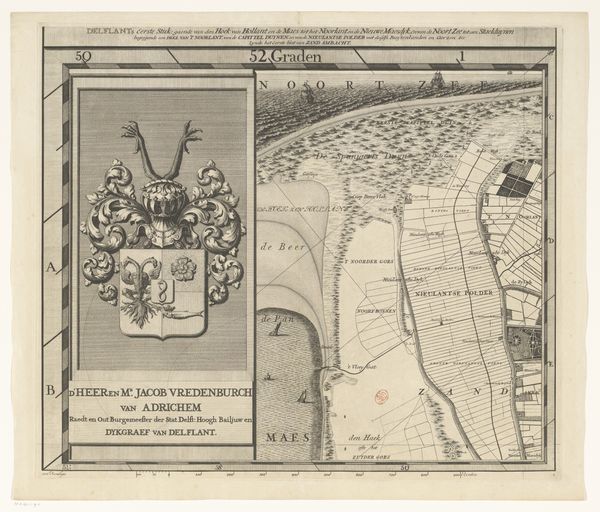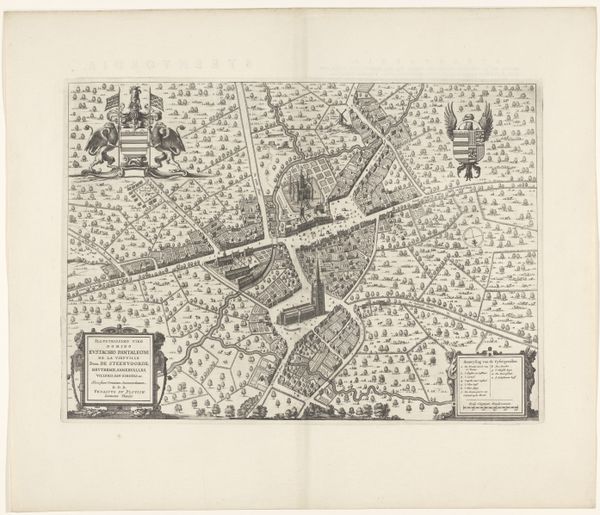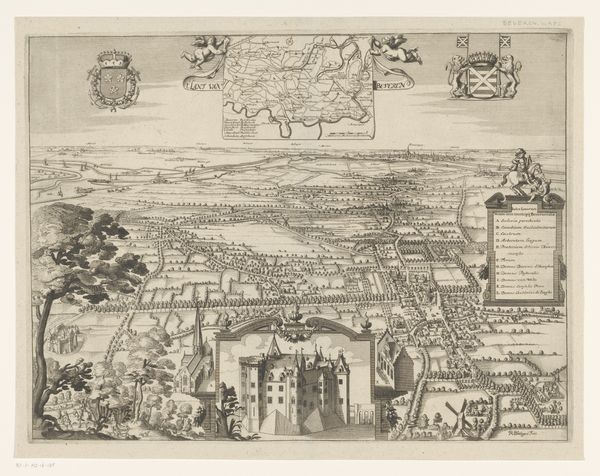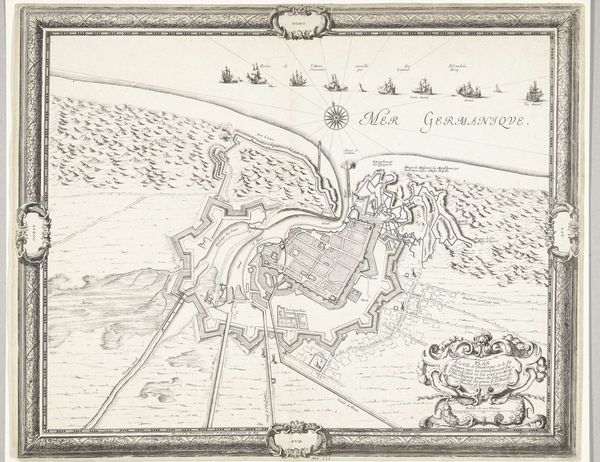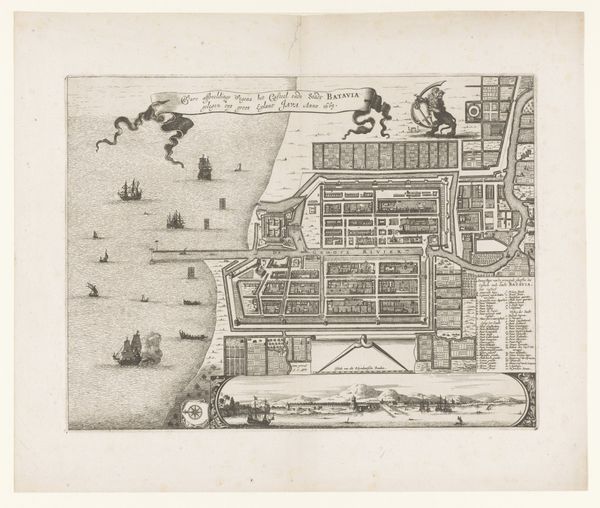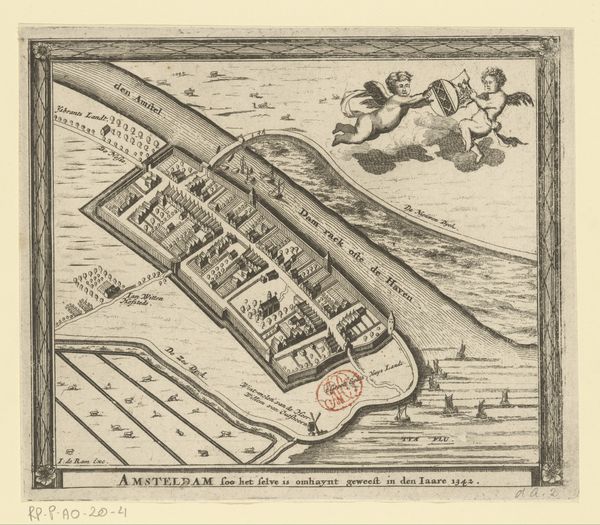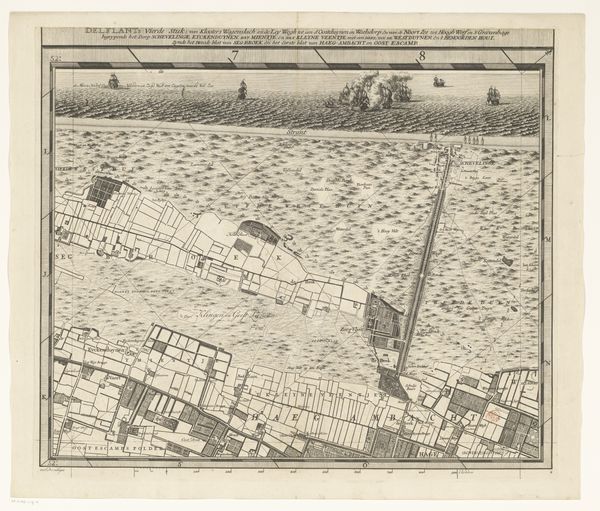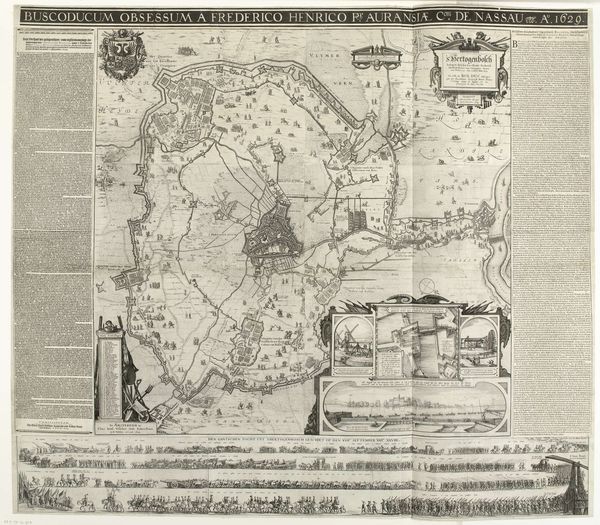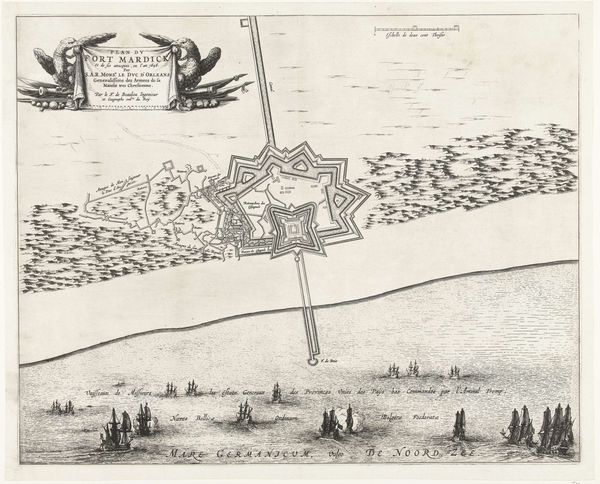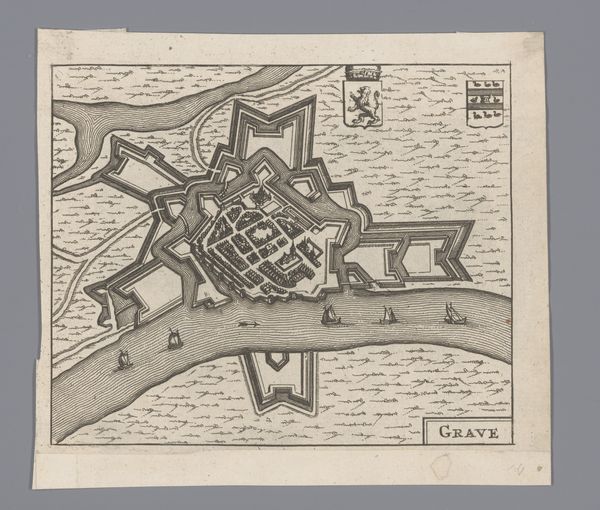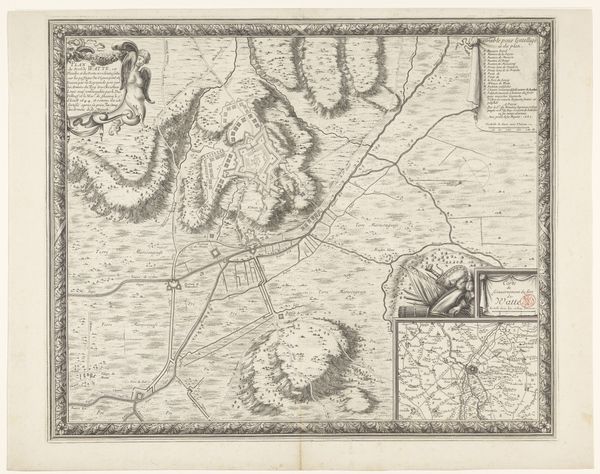
print, paper, engraving
#
dutch-golden-age
# print
#
landscape
#
paper
#
line
#
genre-painting
#
history-painting
#
engraving
Dimensions: height 514 mm, width 593 mm
Copyright: Rijks Museum: Open Domain
Editor: This is an engraving titled "Kaart van het Hoogheemraadschap van Delfland (vijfde deel)" from between 1712 and 1735, printed on paper. What I notice first is the stark contrast between the detail of the land and the openness of the sea; how do you approach an image like this? Curator: The dichotomy you noted between land and sea reveals a constructed visual language. Observe the graphic articulation of space. The land is densely packed with information rendered through minute lines and symbolic shapes—houses, fields, waterways—suggesting a desire to control and classify nature. By contrast, the sea possesses a certain emptiness, represented with more widely-spaced wave formations and three rather small ships. Ask yourself, what does this stylistic opposition achieve? Editor: It’s like the print is more interested in mapping than capturing something picturesque, the coast seems secondary to this… act of recording all of that human infrastructure, which now feels strangely like its own kind of aesthetic design… almost geometric. Curator: Precisely! The work privileges precise representation and organization. It foregrounds systems of thought through graphic design. Semiotically, each element, from the carefully inscribed names to the cartographic symbols, contribute to a unified system. We can discern visual strategies aimed toward clear information display: observe how the topographical details and ornate heraldry coalesce on a flat plane through careful linear engraving. How might our viewing differ had the map incorporated painterly modes, perhaps an atmospheric aerial perspective? Editor: Now that you mention the flatness, I also notice this visual language being employed across the print and lettering which helps emphasize this function over anything more artistic. It certainly feels functional above all. Curator: Indeed. Functional, yet artful in its construction of a self-contained world reduced to essential elements. Both, simultaneously. Editor: Thanks for guiding me through that, I have a clearer perspective on its historical, structural purpose and design. Curator: My pleasure, every image presents the same analytical possibilities; with semiotic diligence the invisible becomes visible.
Comments
No comments
Be the first to comment and join the conversation on the ultimate creative platform.
